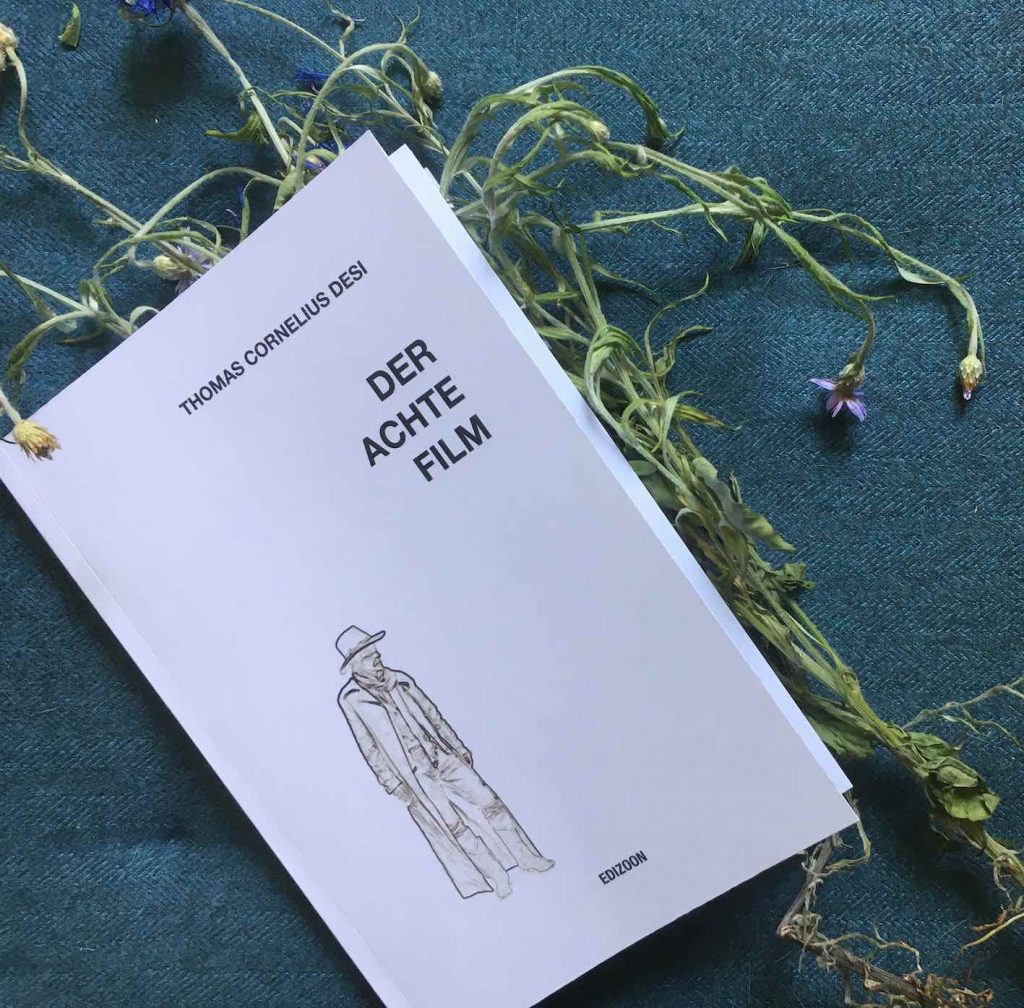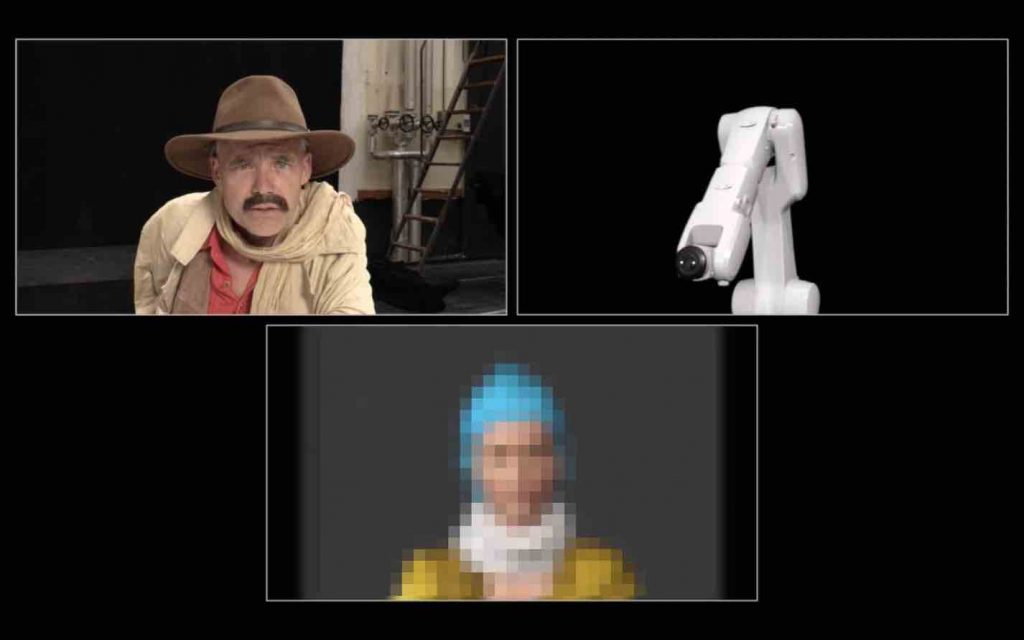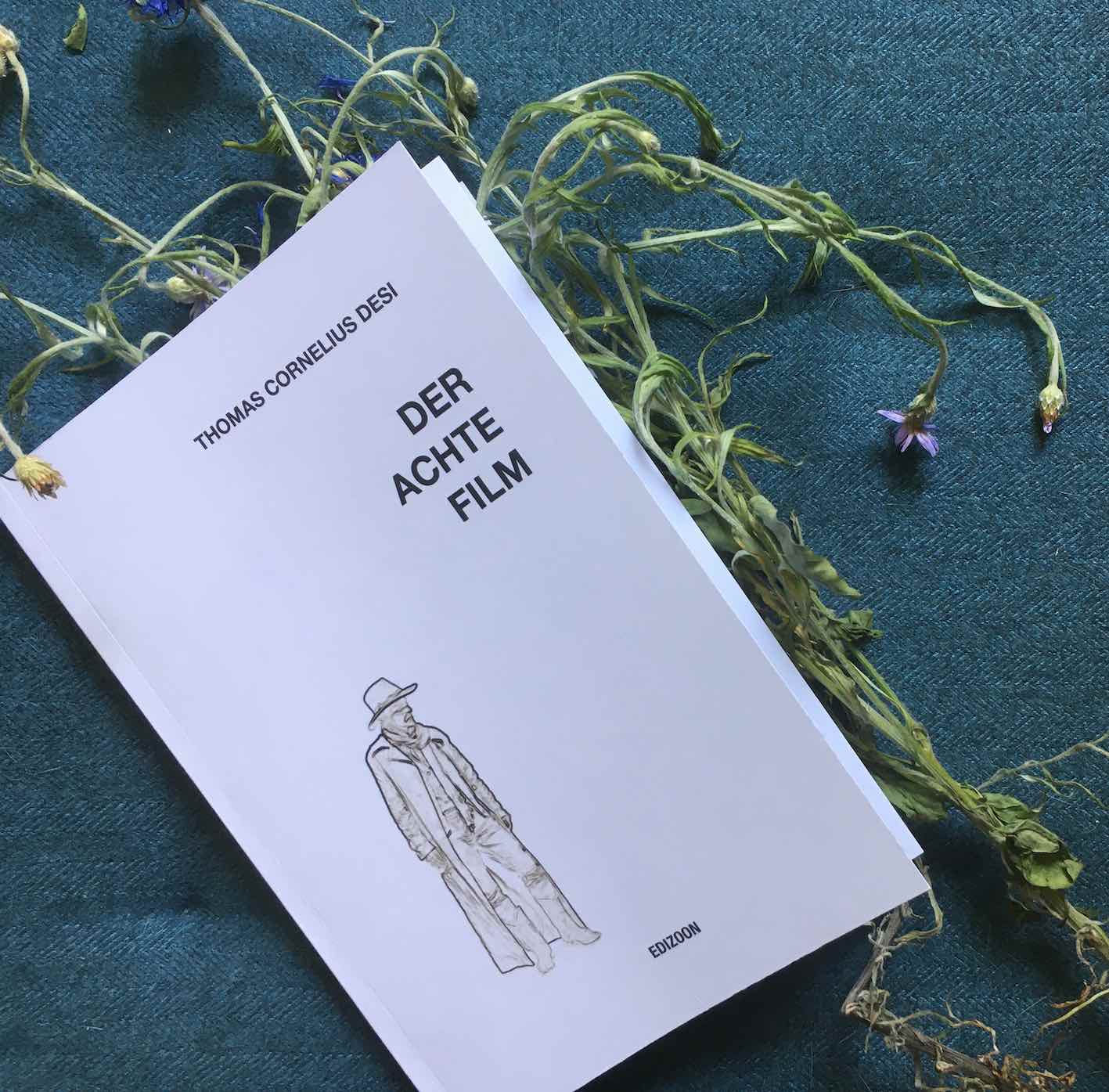ZOON Musiktheater / EDITION ZOON . |
| Buchpräsentation & Premiere der „Virtuellen Version“ |

| DER 8.FILM – Musiktheater als Text Einladung zur Buchpräsentation »DER ACHTE FILM« mit Autor Thomas Cornelius Desi im Rahmendes Projektabschlusses »Tarkovski. Der 8.Film« Anschließend Premiere der virtuellen Version von Desi / Koger / Handler Link zum Film hier Do., 30.06.2022, 19:30 Uhr in der TheaterArche, 1060 Wien, Münzwardeingasse 2a Eintritt frei / Pay As You Wish |
| mit Förderung des BMKOES und der MA7 WienKultur |
Intermedialität, der Wechsel von Medien, Formaten, die »Schnittstellen« von Künsten und Kulturtechniken waren in den vergangenen 30 Jahren vor allem eines: spekulative Formeln zur Auflösung von Genre-Grenzen.
Die Versuche, dem durch die Pandemie verursachten »Social Distancing« via digitaler Möglichkeiten Alternativen entgegen zusetzen, hat eine völlig andere Dimension an Druck innerhalb des Kunstbetriebs erzeugt. Auf der Suche nach Kommunikationskanälen außerhalb der persönlichen Anwesenheit im Theater, entstanden Streamings, Hybridformen und andere Online-Versionen von Performativen Projekten.
»Tarkovski. Der 8. Film« war von Anfang an ein Projekt, in dem Video, Robotik und Artificial Intelligence dem als Verhandlungsthema im künstlerischen Sinn vorhanden waren. 2018 mit dem »Fedora Award« in der Finalisten Short-List und zweitplatziert, als eine freie Wiener Produktion neben dem Festival von Avignon (!) und der Oper von Amsterdam (!), ergab sich durch die Beschränkungen der Pandemie neben dem Doku-Video noch eine eigenständige Virtualisierung in Gestalt einer »Videokonferenz«.
Parallel zu diesen Wandlungen einer medialen Form, die ursprünglich eine Opernkomposition war (2005) – dann zum Electronic Music Theatre wurde (2018) – und schließlich als reine Online-Form als Virtuelles Musiktheater (2022) zu bezeichnen wäre, sammelten sich nicht nur Aufzeichnungen zum Entstehungsprozess, sondern Ereignisse im Leben der Beteiligten wurden zu einem Teil des Projektes. Daraus entstand die Idee einer romanhaften Erzählung, die der Autor Thomas Cornelius Desi nun als Buch herausgebracht hat (2022). Es ist – neben einer Dokumentation des Projektes – auch eine an E.T.A. Hoffmann anknüpfende literarische Aneignung von Musik und Musiktheater. Insoferne schreibt sich dieses Projekt in eine Beschäftigung des Autors mit dem Thema der »Übersetzung« ein: Übersetzungen, nicht nur von einer Sprache in eine andere, sondern von einem Medium in ein anderes.
- Thomas Cornelius Desi: DER ACHTE FILM, Erzählung
- Taschenbuch, 132 Seiten
- ISBN 978-3-200-08518-3
- Verlag Edizoon, erhältlich unter td@zoon.at (12 €)

| Still aus: »Tarkovski. Der 8.Film – Virtuell« – von Thomas Cornelius Desi, Gilbert Handler, Peter Koger, ©2022 |
Claudia Mongini
“Tarkovsky – the 8th film” – Electronic Music Theatre
“As an artist” explains Thomas Cornelius Desi, composer and director of the play, “one is concerned with recurrent ideas. If they come to assume the form of fixed thoughts or even obsessions, they might upsurge to life-issues. For me one such recurrent encounter is the Russian filmmaker Andrej Tarkovsky”.
The idea for this piece has a rather long history. After getting acquainted, in 2001, with the director’s son, Andrei A.Tarkovsky junior, Desi deeply engaged not only with his films, but also with his theoretical writings, in the form of diaries as well as unrealized material. This research led the Austrian composer to score “Hoffmanniana” as an opera, a project which never came into production due to cuts to the budget of the “Bregenzer Festspiele”. This circumstance brought Desi to search for a novel adaptation of the libretto in the form of electronic music. The piece came finally to the stage in 2020, together with the trio »NIHE« (drift), which features Ekke Västrik in charge of analogical electronics, Tarmo Johannes as flutist and sound programmer, and Taavi Kerikmae taking up digital electronics. The fact that this libretto was brought into production with the aforementioned team, Johannes and Kerikmae are members of the Estonian Ensemble for new Music, is of particular significance. The main locations for the shooting of Tarkovksky’s “Stalker”, were a former power plant in Talinn that has now become a cultural center, and a river at the periphery of the city. By the time of the filming, 1976, the water was poisoned with toxic waste from a paper mill. This was the likely cause of the multiple cancer related diseases that occurred amongst the production team, including the filmmaker and his wife. Over 57 minutes, the spectator is confronted with an intense exchange between music and theatre, played out upon a very minimalist, but nevertheless highly technological scenario: two “real” actors, Tarkovsky (Gilbert Handler) and the Robot (KUKA), are accompanied by three “virtual” personae : Mischa, Tarkovsky’s wife, (Gotho Griesmeier), Boris, the commissioner of the 8th Film (Martin Achrainer) and a synchronized chatbot. The stage setting, orchestrated visually by Peter Kogler, is in strong resonance with the content of the play.
In the middle of the piece, Boris expresses a peculiar request concerning the commission, “I want a document of the human soul!”One scene later Tarkovsky counteracts, by presenting his point of view, “A film about nothing. A film about what happens when consciousness has come to an end. We reach emptiness”. Between this discourse, Boris meditates upon time: “Finally, time is not a thing, but an idea […]. If everyone is happy, there will be no time, because it is not anymore needed”.
It is this form of crystallization of void time, placed at the very center of the play, which constitutes the pivotal moment of tension between music and theatre, virtuality and actuality, and finally, art and life. This is the point where Desi’s play meets Gilles Deleuze’s reading of Tarkovsky, expressed in the second book of his work on Cinema.
According to Deleuze, the crystal corresponds to the “formation of an image with two sides, the actual and the virtual”, whereby the virtual corresponds to the actual like a “double” or a “reflection”:
“the real object is reflected in a mirror-image as the virtual object which, from its side and simultaneously, envelops and reflects the real”. The crystal is therefore the “smallest circle”, the “most restricted circuit of the actual image and its virtual image which carries everything and serves as an internal limit. […] There is no virtual which does not become actual in relation to the actual, the latter becoming virtual through the same relation: it is a place and its obverse, which are totally reversible”.
The mutual resonance between actual and virtual is the operation by which the crystal image acquires its own degree of reality. Instead of depicting a psychological state of consciousness, it comes to constitute an abstract dimension of “pure recollection”.
Coming back to the play, the idea of the “double” gaining its own form of life is particularly accentuated in the splitting of Mischa. Four women are projected onto a gauze. Small diverging particulars can be observed intermittently; in other scenes the figures turn out to be identical. We see that the visual signs operate on two different levels: the expression of singular and unique traits parallels the concern of the Gestalt as a whole. Despite their projection onto a two-dimensional frame, the vocal performances of the four Micha’s enable them to gain a progressively enhancing corporeal and organic reality. The spectator is brought back to their digital nature in the moment of their sudden and synchronous disappearance.
The human and non-human actors are enclosed in their own world, or monad, as Leibniz would say. Each is bound to a peculiar milieu, incompatible with that of the others. The ping pong game between Tarkovsky and the chatbot at the beginning: “Are you ok?” “I’m Not OK” “You’re OK, I’m Not OK”…, introduces a form of dissonance which will continue for the entirety of the play. The specific digital or analog realm ascribed to each performer, agrees with the production of her or his own form of interiority; it evolves according to its peculiar logic of enunciation. Despite the persistent presentation of multiple dimensions enclosed in themselves, a kind of multiplicity of separate universes, Desi ties the work together through his music. In this respect, music emerges in its own form of specificity: the development of subtle processes of transcoding between analogue and digital sources. This element leads towards the counteractualisation of the theatrical monologues. The logic of closure produced by speech, is countered by a subtle form of melodic inter-expression: each singular monad acquires a specific form of resonance working in conjunction with all the others.
The final scene presents Tarkovsky dancing in his own virtual reality world, but being nevertheless mimicked by the robot, who imitates his movements and brings them to completion. We glimpse the possibility of a line of flight, an escape leading outside the logic of a solipsistic void: the sound of a flute coming from the back of the stage engenders a refrain between the human and the non-human thus opening the possibility for a fragile form of collective aesthetic affirmation.
